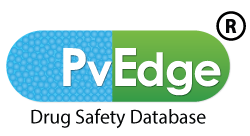Thanks to all the regulations that define the futuristic vision of safe and complete reporting as well as the rat race wherein the industry wants to sustain their presence amidst growing pharmacovigilance services competition.
However, certain issues are still buried and need to dig up. These mainly are the areas that are either sub-sections of pharmacovigilance or are in its vicinity.
Current topics demanding attention include:
- Medical information handling to route SAEs and other inquiries
- Harmonizing PV on a global scale (currently a big challenge to address local PV versus global PV requirements)
- Integrating health care system with Industry – as health care segment holds substantial patient-base for whom, safety reporting is but of immense significance (drug abuse, medication error, product complaints/defects etc.)
- Pharmacovigilance for generics
- Standard, uniform safety processes instead of individualized procedures
- Common forums for discussing findings to create awareness on a wider platform
- Language barriers – Concerns for reporting literature in local language
In order to match the pace of Regulatory norms, Industry needs to gear up for:
‘Applicable’ Regional Regulations
- Awareness of product-category wise local and global pharmacovigilance regulations i.e., medicinal product, vaccines, medical device, veterinary products, biotechnology products etc. e.g., as per the Health Canada, domestic reports related to unusual failure in efficacy must be reported to the MHPD (Marketed Health Product Directorate) within 15 calendar days of the receipt of information by the MAH1, whereas as per GVP Module VI, lack of therapeutic efficacy should consider clinical judgment and should not normally be reported but discussed in PSUR as applicable, unless under certain circumstances detailed in guideline2.
- Simply guideline referral is not enough; ensuring application/limited application of the regulatory guidelines for safety submissions. E.g., the reporter and the sender personnel information may be kept confidential in report submission as per the local regulatory requirements.
Operational Documentation
- Involving thorough documentation for PV systems. It includes, but is not limited to-
- Defining detail SOPs
- Documented CAPA and implementation per se
- Regulatory non-compliances and ways to overcome
- Recording follow-ups in time/missed follow ups should also be recorded!
- Actions for failure/delayed submissions
Effective Resource Management
- Defining organizational hierarchy and managing resources to have no crisis when reporting on a massive scale
- Having a pharmacovigilance team of naïve professionals to experienced stalwarts for balancing skills versus expertise
- Arranging continuous sessions for internal orientation and inviting domain experts for sharing advancement in field
Systematized pro-active database configuration
- Having a durable and validated system to manage the database and provide meaningful analysis as well as listings/reports in desired format
- Upgrading system to cope up with differing regulations in regions when referring to a global pharmacovigilance scenario e.g., preparation relating to recent EMA draft guidance on medication errors in pharmacovigilance3
References:
1.https://www.hc-sc.gc.ca/dhp-mps/pubs/medeff/_guide/2011-guidance-directrice_reporting-notification/index-eng.php#a22
2.https://www.ema.europa.eu/docs/en_GB/document_library/Scientific_guideline/2012/06/WC500129135.pdf
3.https://www.lexology.com/library/detail.aspx?g=201ed873-8e8e-4c53-8bbb-f0658ee67f11
For regular Pharmacovigilance updates, connect with us on LinkedIn
Contact Us for more details



